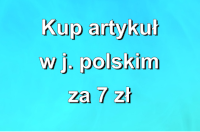Monitoring the process of rehabilitation in children with disorders of central coordination
Wojciech Kiebzak, Czesław Szmigiel, Barbara Błaszczyk
Wojciech Kiebzak, Czesław Szmigiel, Barbara Błaszczyk – Monitoring the process of rehabilitation in children with disorders of central coordination. Fizjoterapia Polska 2003; 3(3); 243-249
Introduction. The purpose of this article is to describe the psychomotor development of infants with disorders of central coordination in the first year of life. Material and methods. 198 infants with various degrees of central coordination disorder were examined. The infants were divided into 5 groups depending on the level of their maturity when born and their fetal age. The course of improvement in rehabilitation was monitored every six weeks in the outpatient rehabilitation clinic. Neuron-development diagnostics were used to monitor progress. In order to depict the dynamics of rehabilitation effects on the treated infants, the T1 scale was applied. This scale differentiates the examined population precisely: the larger the number of infants with positive outcome (monitored in successive examinations), the more the results approach 50-55. Results. Statistical analysis shows a decrease in the results on the T1 scale. Conclusions. A distinct difference in the speed and quality of changes in the physical functioning of infants can be seen if one compares the examined group of infants with the group of premature and dystrophic infants with a birth weight of less than 1500 g.
| Invalid download ID. | Pobierz bezpłatnie artykuł w j. angielskim |


